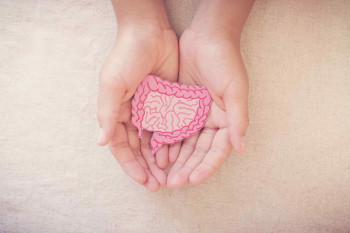14 Spine Facts Everyone Should Know
The human spine is an incredible structure that provides support, flexibility, and protection to our bodies. It consists of a series of bones called vertebrae, which are stacked on top of each other and connected by discs, ligaments, and muscles.
Understanding the spine and its functions is essential for maintaining a healthy and pain-free life. In this article, we will explore 14 spine facts that everyone should know to promote better spine health and overall well-being.
1. The Spine: The Backbone of the Body
The spine, also known as the backbone, plays a crucial role in our body's stability and movement. It serves as a pillar that supports the weight of our body and allows us to stand upright.
Additionally, the spine protects the delicate spinal cord, a bundle of nerves that carries signals between the brain and the rest of the body.
2. The Spine's Structure and Composition
The spine is composed of 33 vertebrae, which are categorized into five regions: cervical, thoracic, lumbar, sacral, and coccygeal.
Each region has a specific number of vertebrae, and their arrangement provides the spine with its natural curvature. The vertebrae are cushioned by intervertebral discs, which act as shock absorbers and allow for flexibility.
3. The Importance of Good Posture
Maintaining good posture is vital for spine health. When we slouch or adopt poor posture habits, it puts unnecessary stress on the spine, leading to pain and discomfort.
Practicing proper posture helps distribute the body's weight evenly and reduces the risk of developing spine-related problems.
4. Common Spine Disorders
Various spine disorders can affect individuals of all ages. Some common spine conditions include herniated discs, spinal stenosis, scoliosis, and degenerative disc disease.
These conditions can cause pain, restricted movement, and other debilitating symptoms. Seeking timely medical attention and adopting preventive measures can minimize the impact of these disorders.
5. The Role of Exercise in Spine Health
Regular exercise is crucial for maintaining a healthy spine. Engaging in activities such as walking, swimming, and yoga helps strengthen the muscles that support the spine.
It also improves flexibility and promotes proper alignment, reducing the risk of spine-related problems.
6. The Connection Between Diet and Spine Health
A well-balanced diet plays a significant role in spine health. Consuming a diet rich in calcium, vitamin D, and other essential nutrients helps maintain strong bones and supports the overall health of the spine.
Additionally, maintaining a healthy weight reduces the strain on the spine, preventing the development of certain conditions.
7. The Impact of Smoking on the Spine
Smoking has detrimental effects on overall health, including the spine. It diminishes the blood supply to the spinal discs, impairing their ability to receive essential nutrients.
Smoking also reduces bone density, increasing the risk of fractures and osteoporosis. Quitting smoking is a crucial step toward maintaining a healthy spine.
8. Spine Health and Ergonomics
Ergonomics refers to the science of designing and arranging objects to optimize human well-being and performance. Maintaining proper ergonomics in the workplace and daily activities helps prevent spine-related problems. Using ergonomic chairs, desks, and equipment reduces strain on the spine and promotes a healthy posture.
9. The Impact of Stress on the Spine
Excessive stress can manifest physically, affecting the spine and causing muscle tension and pain. Chronic stress can lead to poor posture habits and increased muscle tightness, putting strain on the spine. Managing stress through relaxation techniques, exercise, and a balanced lifestyle can contribute to a healthier spine.
10. The Benefits of Regular Stretching
Stretching exercises can improve flexibility, relieve muscle tension, and promote spine health. Incorporating a stretching routine into daily life helps maintain the spine's range of motion and prevents stiffness. Stretching should be done gently and with proper form to avoid strain or injury.
11. The Role of Sleep in Spine Health
Adequate sleep is essential for overall health, including spine health. During sleep, the body repairs and rejuvenates itself, including the spine. It is important to invest in a supportive mattress and pillow that promote proper spinal alignment, ensuring a restful and rejuvenating sleep.
12. Spine Health and Lifting Techniques
Improper lifting techniques can cause significant strain on the spine, leading to injuries and pain. When lifting heavy objects, it is crucial to use proper form, engaging the legs and core muscles instead of relying solely on the back. Additionally, using assistive devices or seeking help when needed can prevent unnecessary spine injuries.
13. When to Seek Medical Attention
Understanding when to seek medical attention is crucial for early diagnosis and treatment of spine-related issues. If persistent back pain, numbness, tingling, or weakness in the limbs occur, consulting a healthcare professional is recommended. Timely intervention can prevent further complications and promote recovery.
14. Maintaining a Positive Mindset
A positive mindset plays a significant role in overall well-being, including spine health. Chronic pain or spine conditions can be challenging, but maintaining a positive attitude, seeking support from loved ones, and engaging in activities that bring joy can help manage pain and promote a healthy mindset.
Frequently Asked Questions (FAQs)
Q1: How can I prevent back pain?
A1: To prevent back pain, it is essential to practice good posture, engage in regular exercise, maintain a healthy weight, and avoid prolonged sitting or standing. Additionally, lifting objects with proper form and using ergonomic equipment can reduce the risk of back pain.
Q2: Can yoga help with spine problems?
A2: Yes, yoga can be beneficial for individuals with spine problems. Yoga improves flexibility, strengthens the core and back muscles, and promotes proper alignment. However, it is crucial to consult with a qualified instructor and avoid poses that may exacerbate existing spine conditions.
Q3: Are there any natural remedies for back pain?
A3: While natural remedies may help alleviate back pain, it is important to consult with a healthcare professional for an accurate diagnosis and appropriate treatment plan. Some natural remedies that may provide temporary relief include applying heat or cold packs, gentle stretching exercises, and over-the-counter pain relievers.
Q4: Can stress cause back pain?
A4: Yes, stress can contribute to back pain. Chronic stress can lead to muscle tension and poor posture habits, placing strain on the spine. Managing stress through relaxation techniques, exercise, and adopting a balanced lifestyle can help reduce the impact of stress on the spine.
Q5: Is surgery the only option for spine disorders?
A5: Surgery is not always the first or only option for spine disorders. Many spine conditions can be managed through conservative treatments such as physical therapy, medications, and lifestyle modifications. Surgery is typically considered when non-surgical treatments have been exhausted or when the condition requires immediate intervention.
Q6: How can I improve my sleep quality for better spine health?
A6: To improve sleep quality for better spine health, consider investing in a supportive mattress and pillow that promote proper spinal alignment. Establish a regular sleep routine, create a comfortable sleep environment, and engage in relaxation techniques before bed. If sleep problems persist, consult with a healthcare professional.
Conclusion
The spine is a remarkable part of the human body that deserves attention and care. By understanding these 14 spine facts, we can take proactive steps to maintain a healthy spine and minimize the risk of spine-related problems. From practicing good posture to engaging in regular exercise, prioritizing spine health contributes to overall well-being. Remember to consult with a healthcare professional for personalized advice and treatment if you experience any spine-related issues.

























